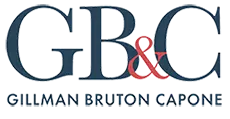On June 7, 2022, the U.S. House of Representatives passed bill S.3823, which is now expected to be signed by President Biden. This bill will increase the debt limits that a debtor – individual, married couple, or business – to qualify for the debt relief offered in a Chapter 13 bankruptcy or a Chapter 11 Subchapter V bankruptcy.
For example, the debt limit for Chapter 13 bankruptcy will be increased to $2.75 million (both secured and unsecured debt combined), which is up from about $1.86 million currently. The new law also eliminates the requirement of the maximum allowed amount of secured and unsecured debt.
The limit for a Chapter 11 Subchapter V (aka small business bankruptcy) will be $7.5 million. This increase in the debt limit for Chapter 13 bankruptcy will be especially beneficial for small businesses and small business owners who want to avoid some of the complications associated with the filing and administration of a “full” Chapter 11 bankruptcy case.
The increases above are expected to sunset (meaning they will no longer be in effect) two years after the enactment unless Congress passes an extension.
What Are Chapter 11 and Chapter 13 Bankruptcy?
Chapter 13 bankruptcy is a “reorganization” bankruptcy where an individual or married couple can restructure their debt through a payment plan. While a business cannot file Chapter 13 bankruptcy the owner of a business may seek protection from business debt in a Chapter 13 case. Chapter 13 also allows debtors to propose to pay past due mortgage payments, address open federal and state tax obligations, or restructure personal debt over a plan of between three (3) and five (5) years.
Chapter 11 bankruptcy is for individuals, married couples, or businesses who seek to restructure their debt. A Subchapter V Chapter 11 bankruptcy – also known as a Small Business Reorganization – allows a business or its owners to restructure and repay debt. In Chapter 11, the debtor has the chance to make their company solvent again but requires more extensive work on their part. A Subchapter V Bankruptcy offers small businesses the opportunity to restructure debt without all of the significant requirements of a “full” Chapter 11 case.
How Businesses Can Take Advantage of This Law
Understanding how these debt limits can be beneficial to you or your business might feel like a complicated process. However, using these laws to your advantage could be highly beneficial to furthering your business and minimizing losses if you find yourself needing to file for bankruptcy.
For many of our clients, the increased debt limits for Chapter 13 bankruptcy may allow you to avoid the costly and complicated process of a Chapter 11 bankruptcy case.
For businesses and their owners, the increased debt limits for a Subchapter V bankruptcy will allow more small businesses to take advantage of the reduced requirements and additional legal benefits of a Small Business Reorganization.
At Gillman, Bruton & Capone, we can help explain how this bill works, as well as all other laws involving bankruptcy, to ensure you use every financial law to your advantage. Contact us now to learn what options are available to you.


